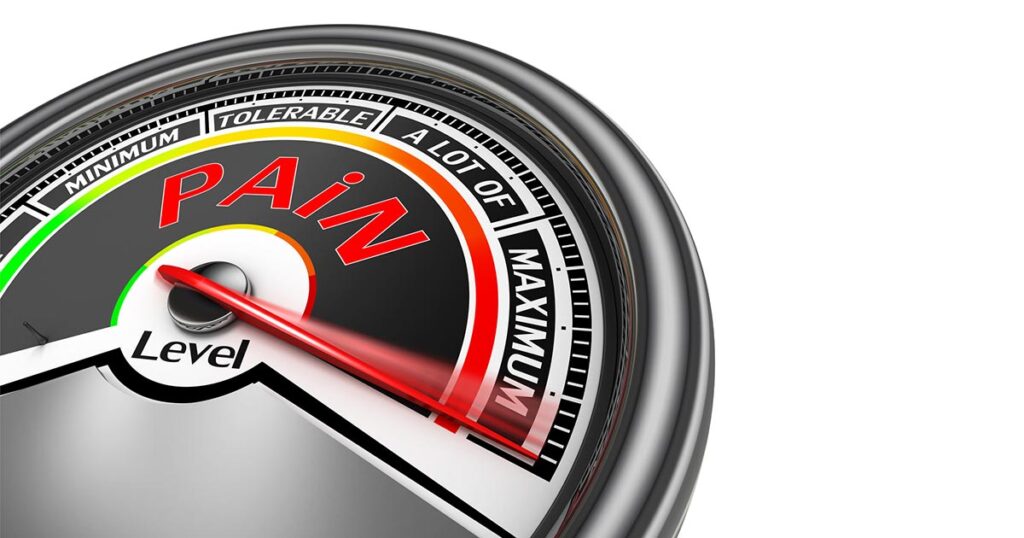The Dictionary defines Pain as an ‘unpleasant bodily sensation that causes physical discomfort and emotional distress and typically results from bodily disorder (such as injury or disease)‘.
It is the body’s alarm system to alert you that something is wrong, that there is actual or potential damage to the body.
If you were to step on a pin, specialised nerves within the body would transmit a signal along your spinal cord to the brain to tell it that there is potential tissue damage in the foot; the brain then makes a decision that in order to avoid further damage you must move your foot and avoid the pin. The brain then sends another signal back to the muscles and nerves in that area of your body so that you move away from the pin quickly. This happens instantaneously and is known as a reflex arc.
People experience and describe pain differently, and this is why osteopaths often use pain scales to determine how much pain you are in because the same injury will feel different to different people. Pain scales usually involve choosing a number from 0 to 10 to describe your level of pain. It’s also a good way to track your improvement.
There are lots of different types of pain and ways to describe it, some of these words include: burning, hot, stabbing, tender, sore aching, deep, nagging, intermittent, sharp or shooting.
Acute pain
Acute pain is short term pain; often after an injury and improves as the body heals. People often mistake this term to mean that the pain is more severe but this is not always the case.
Chronic pain
Chronic pain is pain that lasts beyond the expected time for healing, usually longer than 6 months. It can be after surgery or an injury that hasn’t resolved, or with chronic conditions such as osteoarthritis, fibromyalgia and osteoporosis.
Acute pain can become chronic if left untreated or not fully resolved.
The longer pain is left untreated the more likely the person is to become pain sensitized; this means that the body is more sensitive and things that normally wouldn’t hurt now cause pain.
Pain is not always just a physical sensation.
It can affect your mental wellbeing and emotions, your attitude, sleep and concentration, and have a detrimental impact on many other aspects of daily life.
At HealthLinks Gippsland we give our patients a detailed treatment plan to help you get out of pain and ensure your issues are resolved as quickly as possible.
Please speak to our team to see how we may be able to help you.
References
Kelly, L. (2019). Housecall: Understanding pain. Mayo Clinic. https://newsnetwork.mayoclinic.org/discussion/housecall-understanding-pain/
Martinez, K. (2023). What is pain, and how do you treat it? Medical News Today. https://www.medicalnewstoday.com/articles/145750
Merriam-Webster. (n.d.). Pain Definition & Meaning. https://www.merriam-webster.com/dictionary/pain

